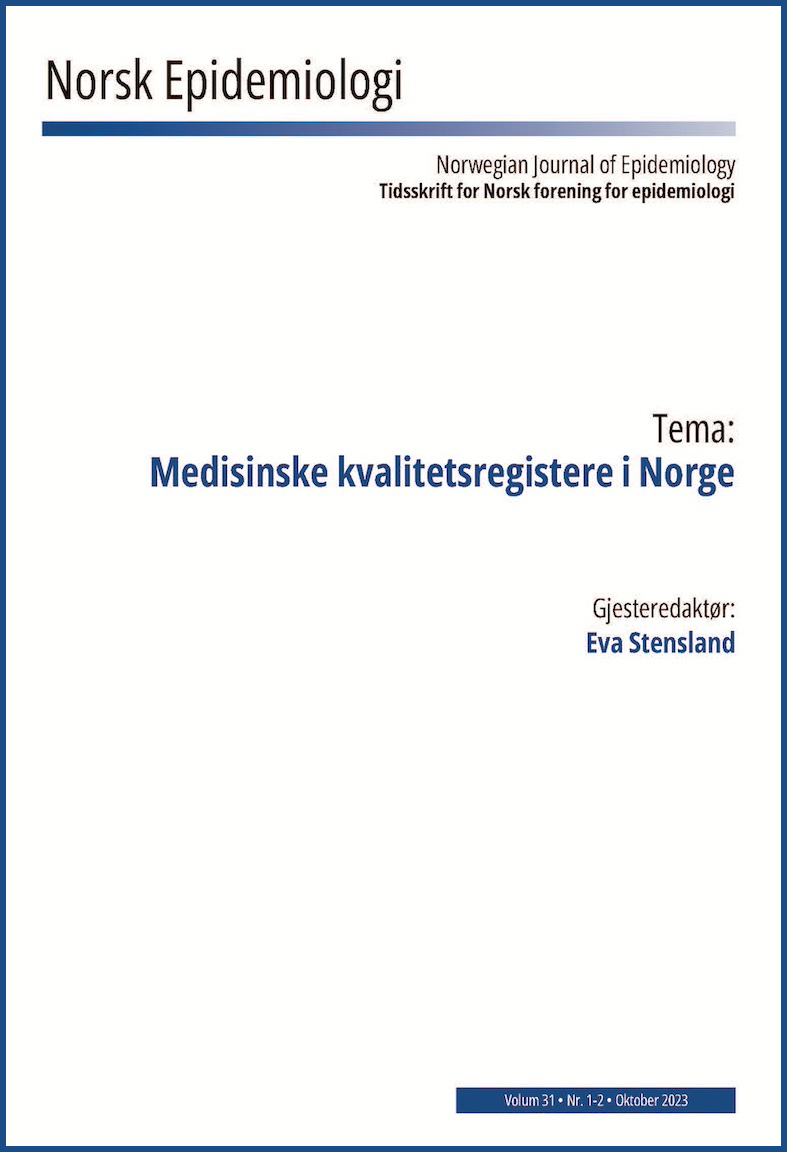The impact of longitudinal surveillance of individuals with cerebral palsy in Norway; a 20-year quality registry and follow-up program perspective
DOI:
https://doi.org/10.5324/nje.v31i1-2.5606Abstract
ABSTRACT
The Norwegian Quality and Surveillance Registry for Cerebral Palsy (NorCP) has systematically collected
data on individuals with cerebral palsy (CP) and been a driver of knowledge dissemination for over 20 years.
NorCP data have increased the competence of health professionals in both the municipal and specialist
healthcare services through publication of multiple scientific articles ranging from risk factors for CP to
lifelong interventions, quality improvement projects, and training services. This has led to a streamlined
process in the diagnosis and follow-up of children and youths with CP in Norway to ensure that they receive
"the right treatment at the right time," regardless of where they live using evidence-based interventions based
on needs that are revealed in the registrations.
NORSK SAMMENDRAG
Norsk kvalitets- og oppfølgingsregister for cerebral parese (NorCP) har systematisk samlet inn data om
personer med cerebral parese og vært en pådriver for kunnskapsformidling i over 20 år. NorCP data har økt
kompetansen til helsepersonell i både kommune- og spesialisthelsetjenesten gjennom publisering av flere
vitenskapelige artikler om risikofaktorer for CP til livslange intervensjoner, kvalitetsforbedringsprosjekter
samt kurs og kompetansetjenester. Dette har ført til økt kvalitet på diagnostisering og oppfølging av barn og
unge med CP i Norge, som sikrer at de får «riktig behandling til rett tid», uansett hvor de bor i landet med
bruk av evidensbaserte intervensjoner basert på behov som avdekkes ved registreringene.
Downloads
Downloads
Published
How to Cite
Issue
Section
License
Copyright (c) 2023 Sandra Julsen Hollung, Reidun Jahnsen, Gunvor Lilleholt Klevberg, Nina Kløve , Guro L. Andersen

This work is licensed under a Creative Commons Attribution 4.0 International License.
Norsk Epidemiologi licenses all content of the journal under a Creative Commons Attribution (CC-BY) licence. This means, among other things, that anyone is free to copy and distribute the content, as long as they give proper credit to the author(s) and the journal. For further information, see Creative Commons website for human readable or lawyer readable versions.
Authors who publish with this journal agree to the following terms:
1. Authors retain copyright and grant the journal right of first publication with the work simultaneously licensed under a Creative Commons Attribution License that allows others to share the work with an acknowledgement of the work's authorship and initial publication in this journal.
2. Authors are able to enter into separate, additional contractual arrangements for the non-exclusive distribution of the journal's published version of the work (e.g., post it to an institutional repository or publish it in a book), with an acknowledgement of its initial publication in this journal.
3. Authors are permitted and encouraged to post their work online (e.g., in institutional repositories or on their website) prior to and during the submission process, as it can lead to productive exchanges, as well as earlier and greater citation of published work (See The Effect of Open Access).

